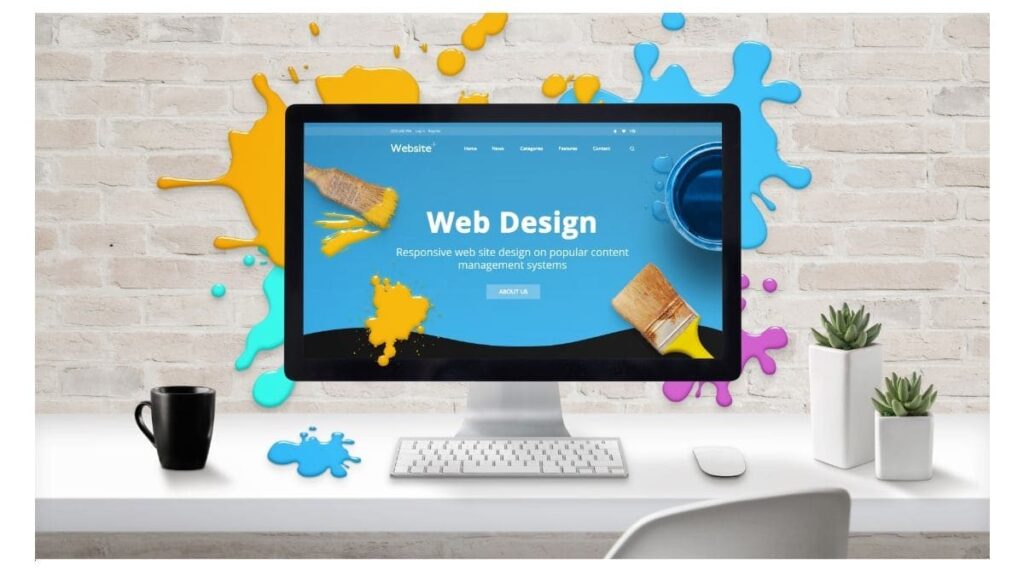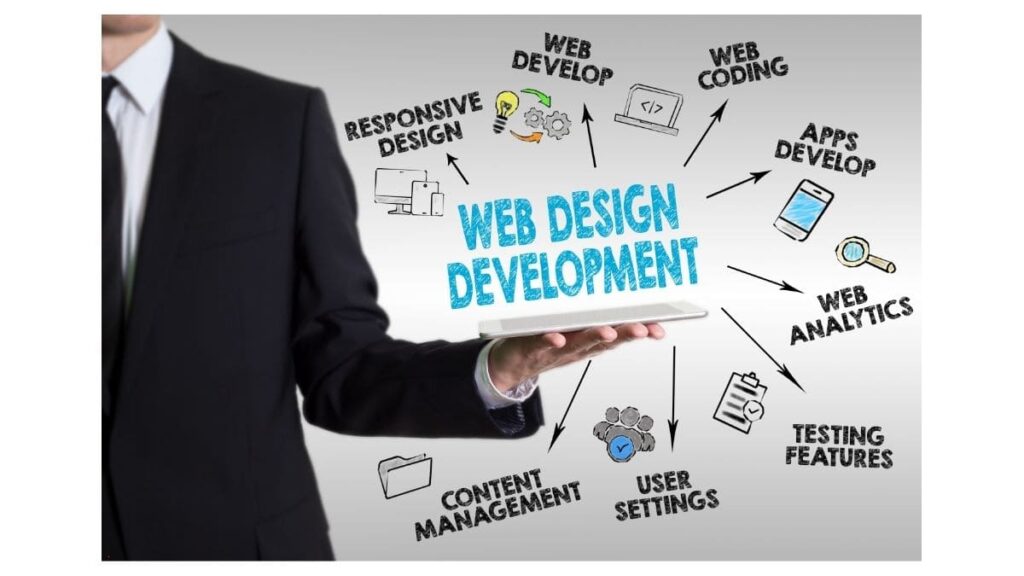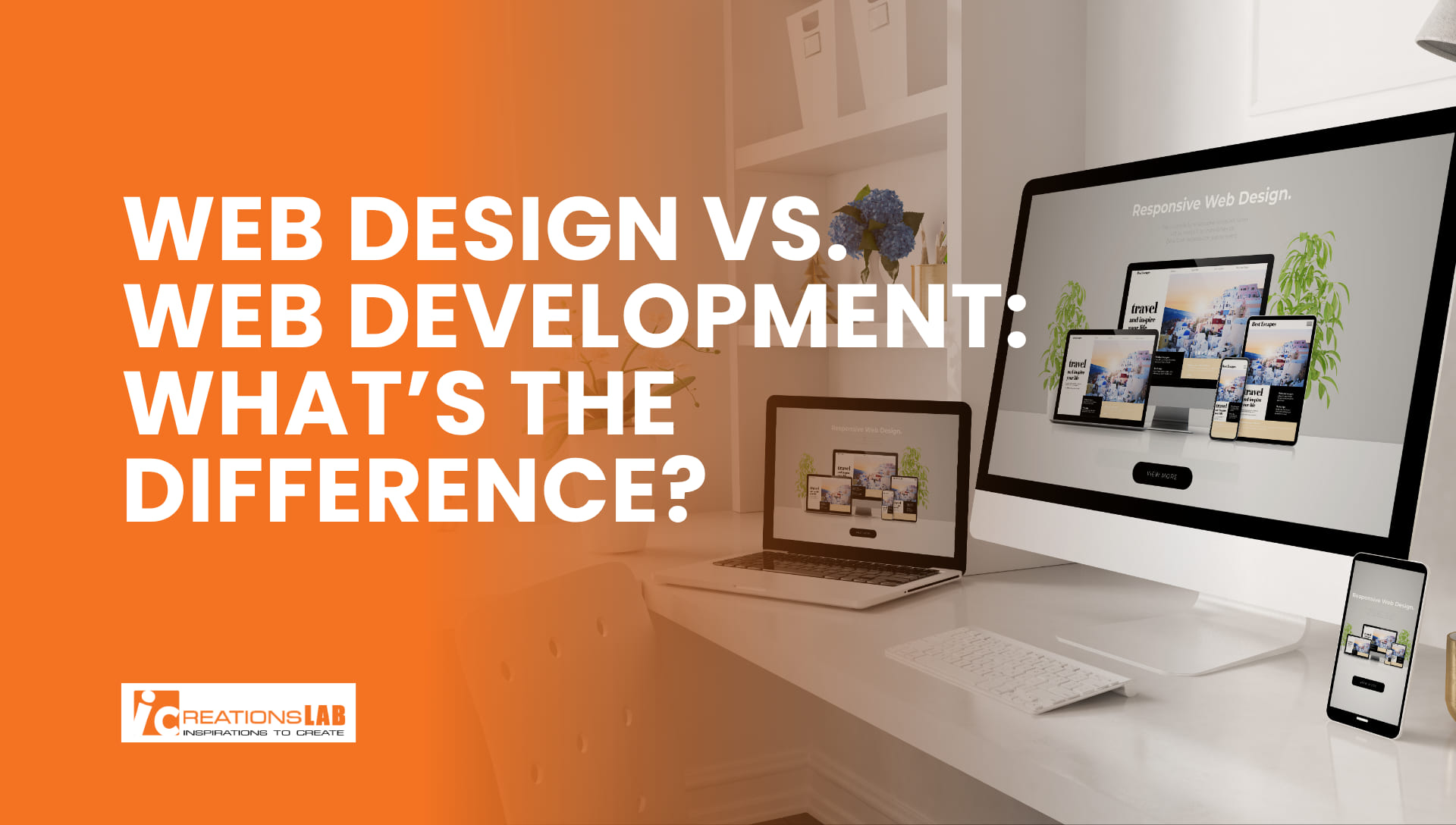In the digital era, every successful online presence—from a simple blog to a complex e-commerce giant—is the result of a powerful synergy between two distinct yet interconnected fields: Web Design and Web Development. While these terms are often used interchangeably, they represent different stages, skill sets, and objectives in the website creation process.
Simply put, Web Design is the art of creating the website’s visual look and feel, focusing on aesthetics and user experience. Web Development is the science of building the functional backbone that makes the design come to life. Understanding this fundamental difference is crucial whether you’re looking to build a career in tech, hire a team, or simply grasp the mechanics behind your favorite websites.
This in-depth guide will dissect each discipline, providing a comprehensive view of their roles, skills, tools, and future trends.
See More: 10 Crucial Elements for High-Converting eCommerce Homepage Design
I. Web Design: The Art of Visual Appeal and User Experience (UX/UI)

Web Design focuses on the aspects of a website that a user directly interacts with—the look, the feel, and the navigation. It’s all about creating an intuitive, aesthetically pleasing, and brand-consistent interface. The primary goal of a Web Designer is to ensure a smooth and satisfying User Experience (UX).
1. The Core Focus Areas of Web Design
Web Design is a broad term that encompasses several specialized fields, predominantly focusing on the user.
User Experience (UX) Design: This is the most critical element. UX Designers study user behavior, map out the customer journey, and structure the website’s content and navigation to make it easy and logical for visitors to achieve their goals.
- Key Deliverables: Wireframes, site maps, user flows, and competitor analysis.-
User Interface (UI) Design: UI Designers focus on the visual and interactive elements the user will encounter. This includes the placement of buttons, colors, typography, imagery, and the overall look of the site. They are responsible for making the interface beautiful and highly usable.
- Key Deliverables: High-fidelity mockups, style guides, and design prototypes.
Visual Design: Ensuring the website’s aesthetics align with the client’s brand identity. This involves choosing color palettes, font pairings (typography), and visual hierarchy.
Accessibility Design: Making the website usable by people with disabilities (e.g., proper color contrast, keyboard navigation).
2. Essential Skills and Tools for a Web Designer
A successful Web Designer possesses a blend of creative talent and technical understanding.
| Skill Set | Description & Importance | Standard Tools |
| UX Principles | Understanding user psychology, information architecture, and testing methodologies. | Figma, Sketch, Adobe XD |
| UI Principles | Mastery of layout, visual hierarchy, color theory, and Gestalt principles. | Adobe Photoshop, Adobe Illustrator |
| Prototyping | Creating clickable, interactive models of the website before development begins. | InVision, Marvel, Figma |
| Basic Front-End Knowledge | A fundamental grasp of HTML and CSS to understand the technical constraints of developers. | Text Editors (VS Code for light coding) |
| Communication | Ability to present and defend design choices to clients and developers. | Miro (for collaboration) |
See More: UX or SEO? Why a Professional Website Designer Needs Both
II. Web Development: The Science of Functionality and Performance

Web Development is the technical counterpart to Web Design. It’s the process of taking the approved design mockups and writing the complex code that transforms them into a fully functional, interactive website. Developers build the engine and infrastructure that make the car (the design) move.
1. The Three Pillars of Web Development
Web Development is typically split into three main specialties, depending on where the code is executed:
Front-End Development (The Client-Side): The developer focuses on the code that runs directly in the user’s browser. They use the Web Design files to build everything the user sees and interacts with.
- Core Languages: HTML (Structure), CSS (Styling), and JavaScript (Interactivity).
- Role: Translating UI/UX design into functional code.
Back-End Development (The Server-Side): This is the “behind-the-scenes” part of the website—the server, application, and database. Back-End Developers manage logic, security, database interactions, and user authentication.
- Core Languages: Python, PHP, Ruby, Java, Node.js.
- Role: Building the functional core, APIs, and data management systems.
-Full-Stack Development: A developer proficient in both Front-End and Back-End technologies. They can handle the entire scope of development, from the visual presentation to the server logic.
2. Essential Skills and Tools for a Web Developer
A Developer’s toolkit is primarily focused on code, logic, and infrastructure management.
| Skill Set | Description & Importance | Standard Tools |
| Programming Languages | Mastery of HTML, CSS, JavaScript (Front-End); and one or more Back-End languages (e.g., Python). | VS Code, Sublime Text |
| Frameworks/Libraries | Expertise in using specialized code structures to speed up development (e.g., React, Angular, Laravel, Django). | Node.js, NPM/Yarn |
| Database Management | Proficiency in querying and structuring data (e.g., SQL, MongoDB). | MySQL, PostgreSQL |
| Version Control | Using Git to track changes and collaborate effectively with a team. | Git, GitHub/GitLab |
| Testing & Debugging | Writing and executing tests to ensure code is bug-free and functions as intended. | Browser DevTools |
See More: 7 Critical Website Development Factors for Conversions
III. The Interdependence: A Successful Website Requires Both
While distinct, Web Design and Web Development are inseparable in the creation of a high-quality website. They form a continuous loop:
1, The Designer’s Blueprint: The Web Designer creates the visual and structural blueprint (wireframes, mockups). They define what the site will look like and how a user will navigate it.
2, The Developer’s Construction: The Front-End Developer takes this blueprint and builds the visible structure using HTML/CSS/JS, ensuring the layout and interactivity match the design pixel-perfectly.
3, The Backend Engine: The Back-End Developer connects the structure to the necessary data and server logic, ensuring that forms submit, users can log in, and information is retrieved from the database efficiently.
A designer must understand the limitations of code, and a developer must respect the integrity of the design. A breakdown in communication between these two roles often results in a poor user experience.
IV. The Strategic Importance of Web Design in Business
The rise of the digital consumer has placed Web Design at the forefront of business strategy, moving it beyond mere aesthetics.
1. The Impact of Design on Conversion and SEO
Trust and Credibility: A professional, modern web design instantly builds trust. Studies show that users form an opinion about a website in under 50 milliseconds, and this judgment is based primarily on visual design. Poor design immediately erodes credibility.
Conversion Rate Optimization (CRO): Effective web design strategically guides users toward a desired action (purchase, sign-up, inquiry). A UX-driven layout, clear calls-to-action (CTAs), and minimal friction in the checkout process directly impact conversion rates.
Search Engine Optimization (SEO): While development (speed, code structure) is vital for technical SEO, Web Design contributes heavily to User Signals, which are major ranking factors.
- Low Bounce Rate: A good UX/UI keeps users engaged, reducing the number of people who immediately leave the site (bounce rate).
- Dwell Time: An engaging design encourages users to spend more time on the site (dwell time).
- Mobile-First Design: Since Google prioritizes mobile indexing, a responsive web design that prioritizes mobile users is a necessity, not an option.
2. Web Design as a Brand Asset
Your website is the single most important digital representation of your brand. Web Design ensures:
- Consistency: Every page, every color, and every interactive element reinforces your brand’s personality and values.
- Memorability: Unique, functional, and beautiful design makes your brand stand out from competitors in a crowded online space.
- Emotional Connection: Designers use visual language and storytelling techniques to evoke specific emotions and connect with the target audience on a deeper level.
See More: 5 Best Website Builders for Small Business in 2025
V. Future Trends Shaping Web Design and Development
The digital landscape is constantly evolving. Both designers and developers must adapt to emerging technologies.
1. Web Design Trends (Focus on User Experience)
- Dark Mode and Eye Strain Reduction: Offering users the ability to switch to a darker theme for better viewing comfort.
- Micro-interactions: Small, delightful animations and visual feedback (e.g., a button changing color on hover) that enhance engagement and convey system status.
- AI-Powered Personalization: Using Artificial Intelligence to dynamically change content, layout, and CTAs based on individual user behavior and preferences.
- Immersive Design (3D & AR/VR): Incorporating richer, three-dimensional elements and Augmented Reality to create more engaging product showcases and interactive experiences.
2. Web Development Trends (Focus on Performance and Speed)
- Progressive Web Apps (PWAs): Websites that offer an app-like experience, including offline access and push notifications, blurring the line between web and native applications.
- JAMstack Architecture: A modern development approach emphasizing high performance, low cost, and greater security by pre-rendering static content (JavaScript, APIs, Markup).
- Serverless Computing: Moving away from traditional dedicated servers to a cloud-based model where infrastructure is managed by the cloud provider, allowing developers to focus purely on code.
VI. Introducing iCreationsLAB: Where Design Meets Engineering
At iCreationsLAB, we understand that a truly exceptional digital product cannot exist without the seamless integration of masterful Web Design and robust Web Development. We are not just a team of individual specialists; we are an integrated unit where designers and developers collaborate from the initial concept to the final deployment.
Our process is built on the philosophy that great web design is not just about looking good—it’s about functioning perfectly, converting reliably, and performing effortlessly.
- For our Designers: We provide the freedom to innovate while grounding every decision in UX research and data.
- For our Developers: We utilize cutting-edge frameworks and scalable architectures to ensure your website is fast, secure, and ready to grow with your business.
Whether you need a compelling user interface, a streamlined e-commerce experience, or complex back-end system integration, iCreationsLAB delivers solutions that are strategically designed and technically flawless. We turn creative vision into measurable business results.
See More: Think Your Website Looks Fine? Here’s What a Top Web Design Company Sees Differently
VII. 8 FAQs about Web Design (Web Design Q&A)
What is the main goal of Web Design?
The main goal of Web Design is to create a visually attractive and highly usable website that aligns with the client’s brand and business goals. The core focus is on maximizing the User Experience (UX) to ensure visitors can easily find information, navigate the site, and complete desired actions (conversions).
Is Web Design considered a creative or a technical field?
Web Design is a crucial blend of both. It requires strong creative skills for visual aesthetics (color, layout, typography) and technical understanding of how design elements will be implemented using code (HTML/CSS). The UX aspect also demands strong analytical and problem-solving skills.
What is the difference between UX and UI in Web Design?
UX (User Experience) is about the overall feel and functionality—how the user navigates and interacts with the site. UI (User Interface) is about the visuals and interactive elements—the look of the buttons, the color schemes, and the fonts. UX is the map; UI is the visual signage on the map.
Does a Web Designer need to know how to code (HTML/CSS)?
While a Web Designer is not primarily a programmer, a fundamental knowledge of HTML and CSS is essential. This knowledge allows the designer to create realistic designs that can be technically implemented by the developer without requiring excessive, costly revisions.
How important is mobile responsiveness in modern Web Design?
Mobile responsiveness is absolutely critical. Given that a majority of web traffic comes from mobile devices and Google uses a “mobile-first” indexing approach, any effective Web Design must ensure the layout, functionality, and performance are optimized perfectly for all screen sizes.
What are ‘Wireframes’ and ‘Prototypes’ in the design process?
A Wireframe is a low-fidelity, black-and-white blueprint of a webpage layout, focusing only on structure, content placement, and functionality. A Prototype is a high-fidelity, interactive, and often fully-styled version of the design that simulates the final user experience for testing before coding begins.
What are some common tools used by Web Designers?
The most common industry-standard tools for Web Design are Figma, Sketch, and Adobe XD. These vector-based tools are used for creating wireframes, mockups, and collaborative prototypes. Adobe Photoshop and Illustrator are also used for visual element creation.
How does Web Design affect a company’s SEO performance?
Good Web Design heavily influences a website’s SEO through User Signals. A clean, fast, and intuitive design (good UX) leads to a lower bounce rate and a higher dwell time—telling search engines that users are satisfied with the page, thus improving the website’s ranking potential.

